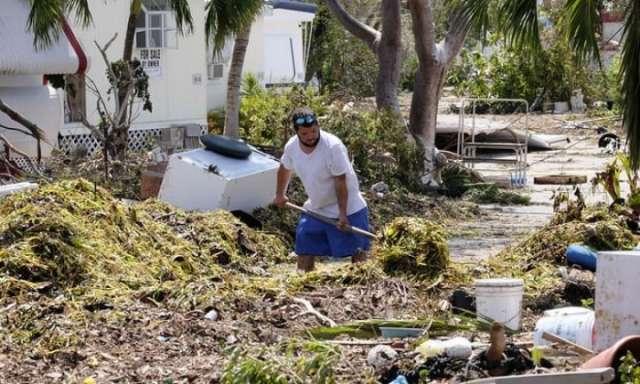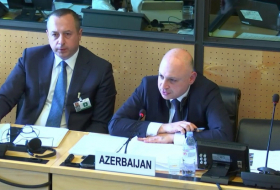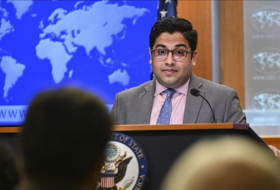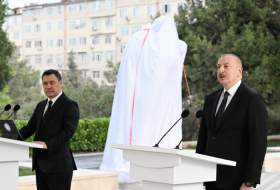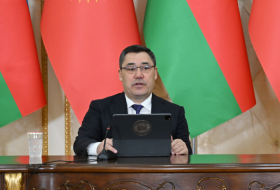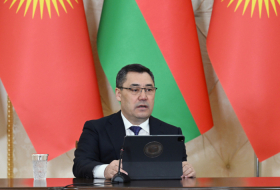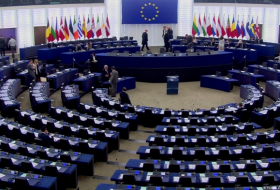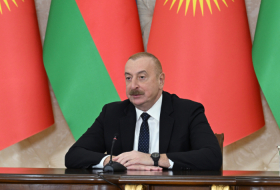And local work safety groups said federal officials have been conspicuously absent from meetings about worker safety.
José Garza, former associate deputy assistant secretary for policy at Department of Labor under Obama, and now executive director of the Texas-based Workers Defense Project, said he had been working with more than 60 organizers in communities in Texas since the storm and had yet to meet with any high-ranking government officials. “Ultimately, the lives of workers are too important for us to sit back and do nothing,” he said.
Part of the problem stems from cuts the Trump administration is seeking to make to federal funding given by the Obama administration to labor groups to train undocumented workers in their rights to a healthy and safe workplace. Local groups claimed the Trump administration was also refusing to coordinate with worker groups doing health and safety training for hurricane cleanup workers.
Disaster cleanup work is extremely hazardous. For example during the hurricanes chemicals got into Houston’s water, including flesh-eating bacteria that already took the life of one woman trying to clean up her home.
As well as chemicals released during the storm, hurricane damage knocked loose asbestos, creating a toxic brew of chemicals and mold, which could cause debilitating and deadly long-term problems for those doing the work.
Reports of the deaths of cleanup workers have already begun to surface.
More than 1,000 workers died from the cleanup work following the 9/11 terror attacks. However, unlike 9/11, where the work was done mainly by firefighters and skilled unionized demolition workers, the cleanup work following Harvey is being done mainly by undocumented day laborers, paid on average $80 a day.
Undocumented workers may also be afraid to speak out about work dangers due to fear of deportations, creating a recipe for disaster, according to safety experts.
“Workers are going to be facing an enormous amount of pressure to move quickly. People want to move quickly and get back into their houses,” said Garza.
“It’s not OK to just get some masks from the 99 cents store, which we hear happens a lot. You have to get real equipment like N-95,” said Martinez, referring to the $8 respirator that the federal National Institute for Occupational and Safety Health recommends for this kind of work.
Most undocumented workers are employed on residential projects and are paid out of pocket by homeowners. If a worker insists on their federal rights, they can easily be fired and replaced by the multitude of day laborers crowding street corners looking for cleanup work.
To combat this pressure, groups like Cosh and Workers Defense Project have begun training organizers to teach workers about how they can protect themselves against hurricane cleanup hazards.
“There are negotiations skills that need to happen for day laborers when they are asking for the proper equipment,” said Martinez. “It’s quite complex in terms of how to train and educate day laborers to ask for their rights.”
Last month, Martinez flew down to Texas with a team of workplace safety experts, who trained more than 60 organizers in how to educate workers.
During the Obama administration, the government’s labor watchdog, the Occupational Safety and Health Administration (OSHA) worked closely with groups like Cosh and Workers Defense Project to enforce workplace safety laws.
With a budget of only $552m, OSHA employs so few inspectors that it would take it 129 years to inspect every workplace; thus the Obama administration saw working with worker advocate groups as a way to amplify their reach and train people to alert OSHA when government action was needed to crack down on an employer.
Trump has moved to cut regulations in order to spur business growth. OSHA’s plans to expand its regulatory reach have been cut in half. Regulations concerning blood-borne pathogens, combustible dust and occupational exposure to styrene have been removed from OSHA’s regulatory agenda, for example.
The Trump administration is also planning to kill the Susan Harwood Worker Training Grant Program, an $11m-a-year in grant to workplace safety groups for health and safety trainings. Under Trump’s FY 2017 budget, the grants would be eliminated entirely.
“Basically there are a lot of workers that OSHA inspectors and OSHA staff have trouble reaching, primarily immigrant workers who may not feel comfortable talking to OSHA inspectors,” said Jordan Barab, who served as the number two at OSHA for eight years under President Obama as the deputy assistant secretary of labor for occupational safety and health.
Loren Sweatt, OSHA’s deputy assistant secretary, said the agency was working with groups on the ground but the agency did not give details about its work – if any – with undocumented workers.
“As OSHA’s dedicated staff continues to respond to Hurricane Harvey, we have worked with hundreds of organizations, conducted more than 1,200 safety and health interventions, directly reached more than 16,000 workers through both English and Spanish communications and interactions, and directed remediation of hazards for over 4,000 workers. All these activities are similar to prior disaster actions taken by OSHA, and the OSH Act protects all working men and women,” she said in an emailed statement.
Barab says that during Hurricane Sandy, that OSHA leadership held emergency meetings and directed regional OSHA staff to coordinate closely with community groups to prevent similar workplace hazards from occurring.
This time, during Hurricane Harvey cleanup, he is not seeing a high level outreach from OSHA to community groups to ensure workers are protected.
“There is no leadership, why would it happen? There is one person in the front office in Washington,” said Barab, referring to the acting OSHA head Sweatt, who served as a Republican staffer on the House education and workforce committee for 15 years.
“She’s not connected to those kind of workers and they aren’t making reaching these kind of workers a priority,” said Barab. “We made it a high priority to focus on these workers in anyway they could and I don’t see that happening in that administration.”
More about: #Hurricane








